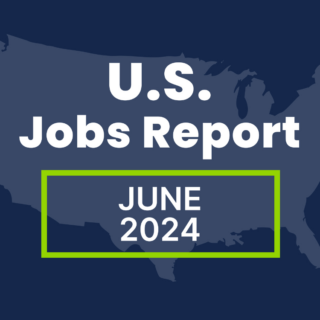As organizations around the globe confront the challenges presented by the coronavirus (COVID-19) outbreak, even the most seasoned talent leaders find themselves in uncharted territory. We’re creating a mini-series with our experts here at PeopleScout about the issues that are most pressing during this uncertain time.
This profile shares insights from PeopleScout Vice President of Technology Carter McHugh. Carter brings more than 22 years of experience in building world-class software solutions for businesses and consumers. In his role at PeopleScout, his passion is creating a culture of technology excellence at a global scale and delighting customers with innovative software solutions that improve their people and business processes. Prior to joining PeopleScout, Carter held various executive technology roles at CSG International, a leading provider of enterprise revenue management and customer engagement solutions for the telecommunication industry.
Carter shared his insights on best practices for using virtual talent solutions from his home office in Chicago.
How does cloud computing enable virtual hiring solutions? What would they look like if we didn’t have this type of technology?
Great companies have been investing heavily in modernizing their technology infrastructure by enlisting the help of major cloud computing platforms like Amazon with their AWS offering, Microsoft with their Azure offering and Google with their Google cloud platform. These companies are experts in providing secure, always on, and really most importantly, managed infrastructure and platform services. Through automation, these services seamlessly support elastic demand — meaning they can rapidly scale up when they’re required to due to extra usage, and they can also scale back down when they’re not as heavily utilized.
In just a matter of weeks, the world has shifted rapidly to fully digitalizing their work requirements, resulting in increased network bandwidth, processing and data storage requirements. Without these managed computing services, companies would be understaffed and would lack both the data center equipment and the automated operations necessary to handle such a rapid increase brought on by virtual talent solutions.
Here at PeopleScout, our proprietary tool, Affinix™ talent technology, and the technology partners we use are all designed to take advantage of these cloud computing services. So, we’ve been able to respond very quickly and ensure that our clients can manage this sudden shift away from traditional, face-to-face interviewing into digital interviewing and virtual hiring throughout their talent acquisition process.
These services aren’t limitless. When we experience outages, what’s happening and why?
I think almost everyone can recall times when they’ve sat down to stream their favorite show or movie and it’s getting interrupted, or they’re seeing a little circle spinning. A lot of that is due to high network congestion or just an overload of too many people trying to access the service at once. As good as these cloud competing platforms are in their ability to provide this highly available, scalable virtual infrastructure and these great application services — it isn’t totally magic.
Somewhere there still exists physical computers, networks, digital storage and in a lot of cases, people who are still running and working very hard to make all of this possible. So, when too many of these resources are requested all at the same time, they all still have to compete for that same available physical resource. Things have to wait their turn to get processed, so that’s when you see the service degradation and the digital disruptions. Sometimes that can result in a lot of end user frustration, and companies work very hard to avoid this. But again, it’s not easy to avoid in a situation like we’re facing today with such a rapid shift into the fully digital experience we’re witnessing right now.
As organizations rely more heavily on these services for their talent acquisition solutions, what are some best practices to avoid outages?
Right now, we’re all staying home and practicing social distancing to help flatten the curve to mitigate overwhelming our critical medical equipment and personnel during the COVID-19 crisis. A similar pattern applies to peak digital technology load used during the workday.
For example, think about when you use a high definition video for a live interview, especially with multiple participants. Imagine you have a hiring manager and several members of a team and they’re all connecting on their webcams with a candidate and trying to complete a live interview. Many organizations across the world are all doing this during the peak business hours between 10:00 a.m. and 4:00 p.m., and all of this combined can really overwhelm those services.
Some good ways to work around this are for talent acquisition teams to:
- Reduce or shift live interview schedules with candidates. Most digital interviewing technology, in addition to having live interview capabilities, offer on-demand interview capabilities. This allows hiring managers to pre-record themselves asking interview questions and make them available via a link to an applicant, who can then choose a time and place of their convenience to record their answers. This can ease the burden of having to do everything live, and candidates can complete an interview without the risk of real-time disruption due to service degradation or unavailability.
- Use text or voice only interviews. This can be especially useful for initial screening interviews. Once you’ve narrowed down your candidate slate to just a few finalists, you can conduct interviews with live video to help reduce the peak usage load for some of these technologies.
It’s also important for companies and teams to ensure that the digital technologies they’re using employ best practices, including data security and consent. When you’re using these tools with your team and candidates, make sure you’re getting their informed consent to participate in the interviews and recordings using the technology.
Right now, we’re dealing with a relatively short-term crisis, but we could see some permanent changes to the way people get hired and do work. What changes do you anticipate going forward?
With any new technology that’s introduced, there are always people who are early adopters and those who are more hesitant. What’s unique in this crisis is that companies that may have been slower to embrace some of the new virtual talent solutions and talent acquisition technologies now have no choice but to adopt these very rapidly — which can really push them out of their comfort zone. They may have felt that using a video technology wouldn’t allow them to deeply connect with their applicant, or maybe they feared embarrassment or looking bad if the technology failed during an interview. Those were all certainly legitimate concerns, but ones that were very rapidly removed in this crisis.
And as companies have been forced to embrace these new technologies, they’re becoming more comfortable with this new normal. They’ll soon start to realize that they may have been trying to get many candidates to interview in-person who may not have been a good fit, and a video interview may have saved time and resources. They’ll also see that the younger generation of folks who are comfortable with technology may actually be seeking out and really appreciate the ability to interact with technology enabled companies and talent acquisition teams that allow them to set their own interview schedules.
I really believe that once this crisis passes, we’ll definitely see permanent changes to many talent acquisition teams’ processes and they’ll be looking to keep the technologies that they’ve been using. They’ll probably be increasing the use of these technologies, really designing their processes and their candidate engagement more so around virtual solutions.
What other types of tools do you see becoming essential for virtual talent solutions?
The hiring process is definitely two way — candidates are just as interested in if the role, company, people and culture are a good fit for them as the hiring manager is trying to figure out if the candidate is a good fit for the job. Onsite team interviews and guided facilities tours have traditionally been a really important part the final interview stages so the candidate and hiring manager can get really sold on whether this is the right place for them and if this is the right candidate for the team.
Seeing the actual what, where and how teams and companies work has always been critical for candidates to picture themselves in a role and make the final decision on whether to accept or decline an offer. With the potential for increasing remote work as teams are more distributed than ever across the globe, some forward-thinking companies are looking ahead with digital onboarding tools. These are tools that bring together team videos, leadership interviews, daily work instructions, examples of people in the role doing the work, and in some cases using augmented or virtual reality scenarios that can create a simulated work environment for a candidate.
All of these things go a tremendously long way in engaging the best candidates with a modern, consumer-like experience that they’re so used to. This also has the benefit of streamlining these talent acquisition processes, so it benefits both sides. It ensures the candidates and hiring managers all have the best information to make what is really one of the most important decisions of their lives.
Are there any final thoughts on virtual talent solutions you’d like to leave us with?
We are truly living in some extraordinary times right now, and I’ve seen how companies all over the globe are reacting quickly and responding to the changes COVID-19 has brought to the workforce. It’s impressive to see the capabilities companies have implemented to enable their workforce, help their employees and continue to find the best talent they can to run their businesses in these truly unprecedented times.
To learn more about ways employers can respond to the coronavirus (COVID-19) outbreak, visit our Resource Center.



